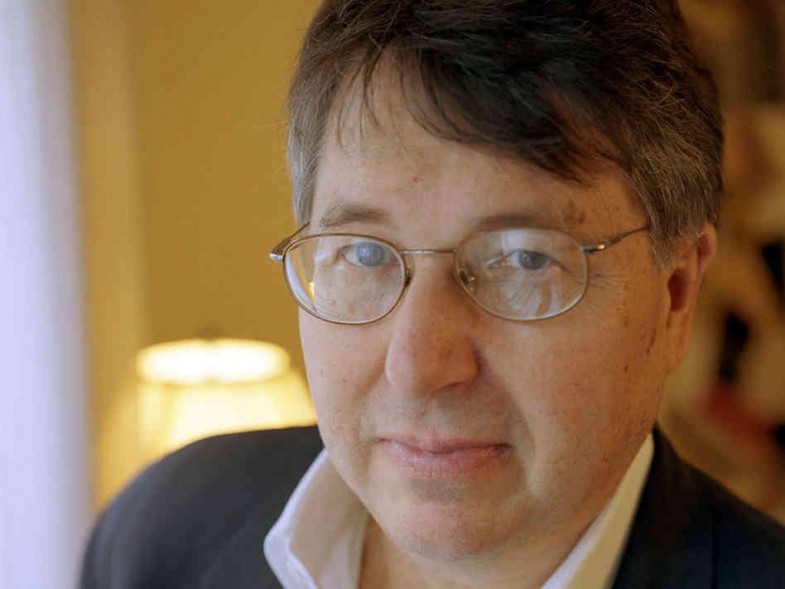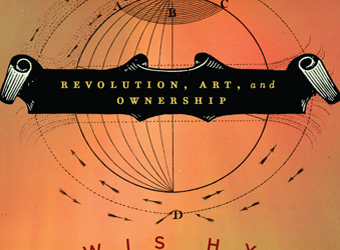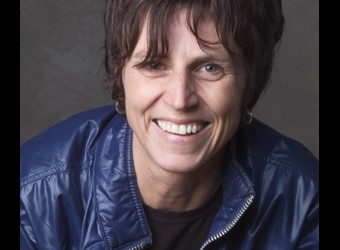Why do you think the idea of the commons has so much resonance now?
All cultures must feel friction between the individual and the group, or between public and private. In the United States, the tension seems unusually marked. At the founding of this country, we had an emphasis on “commonwealth” and we valued “civic virtue,” a thing that citizens could earn by acting more for the group than for themselves.
In his writings on America, Alexis de Tocqueville expressed a typical caution regarding citizens who exclusively seek their own interest: “Individualism at first only saps the virtues of public life; but in the long run it attacks and destroys all others and is at length absorbed in downright selfishness.” As for selfishness, it “blights the germ of all virtue,” Tocqueville declared, aligning himself with the view that had been widespread in British North America before the Revolution. “A people is traveling fast to destruction, when individuals consider their interests as distinct from those of the public,” wrote John Dickinson in 1768. “Brethren, we were born not merely for ourselves, but the Public Good!” wrote Gilbert Tennent a decade earlier.
All of this slowly changed in the nineteenth century, the center of gravity of American thought moving away from the Public Good and toward the individual who happily considers his own interests before all others. Ralph Waldo Emerson was the most eloquent spokesman for this revaluation; his essay “Self-Reliance” being one of the standard calls. “Trust thyself: every heart vibrates to that iron string,” wrote the Sage of Concord. “Do not tell me … of my obligation to put all poor men in good situations. Are they my poor?”
In my own lifetime, the tension between the individual and the collective was deeply affected by the Cold War. In the 1950s, those who sought to strengthen labor unions or the welfare state, or who worked for civil rights, were often the first to be charged with “un-American activities,” if not with being actual communists. Later, Cold War rhetoric — in the ’60s and ’70s- — had the oddly inverse effect of softening government policy toward the collective efforts needed to support the arts. Soviet propaganda, after all, regularly claimed that the United States was a nation of crass, tight-fisted capitalists who could not possibly seek or appreciate the finer things in life. Consciously out to prove them wrong, President Kennedy invited Robert Frost to read at his inauguration and later, at the Frost Library in Amherst, [Massachusetts], defended American cultural freedoms in terms of the standard opposition to communist oppressions, extolling the artist as the “last champion of the individual mind and sensibility against an intrusive society and an officious state.” After Pablo Casals played his cello at the White House, Arthur Schlesinger, Jr. declared the event “of obvious importance … in transforming the world’s impression of the United States as a nation of money-grubbing materialists.” Thus, for a while, did common-wealth (including tax dollars) lend support to the private-wealth of individual creators, and to the institutions that facilitated that support.
There’s much more to say in this line. (I tell the fuller story in the Afterword to the new edition of my book, The Gift). For now, though, the point is that it should not have been a surprise that after the fall of the Soviet Union the US Congress began to feel less inclined to soften the face of capitalism with poetry and cello music. I believe it is no accident that rigorous cuts in funding for the arts followed swiftly the fall of the Berlin Wall in the late 1980s. The market triumphalists had come to power.
That said, if the government, or “the collective” in any form, is going to support art-makers and arts institutions, it seems a shame to do so only in response to another nation’s perceived bad opinion. If we are not “a nation of money-grubbing materialists,” can’t the desired balance be achieved through some counterforce native to our own land and history? Capitalism may well have triumphed over communism, but that does not mean we yet know what capitalism is. Or, rather, there are many forms of capitalism, and here on home ground we should be debating what form we want. The need for that debate and the erasure of “communism” as one pole of the argument — these two things combine, for me, to explain why we now see a growing interest in “the commons.”
What does it mean to be a good cultural citizen?
First of all, it means becoming an actor rather than a passive consumer or audience member. In writing Common as Air, I got interested in two distinct ways of thinking of “property,” common property in particular. Some people say that you know you have property if you have the right to exclude other people from it. I know I own my house because I can keep you out of it.
This is an old view; you find it in William Blackstone, the eighteenth-century British jurist, who defined “the right of ownership” as “that sole and despotic dominion which one man claims and exercises over the external things of the world, in total exclusion of the right of any other individual in the universe.” (And you find it today in the views of someone like Justice Antonin Scalia, who has written that “the hallmark of a constitutionally protected property interest is the right to exclude others.”)
A contrasting view takes property as “a right of action.” I know I own my car because I may drive it, paint it, sell it, clean it, loan it to a friend, etc. My right to exclude others is one such right of action, but only one of a potentially large bundle of rights. Property in this regard is best thought of as the bundle of rights that we have in regard to any particular thing — and most of these should be thought of as rights of action. Property enables us to be agents in the world, people who act rather than find themselves acted upon.
Put briefly, what interests me in regard to cultural commons is the need to resist situations in which a right to exclude comes before the right to use. My book is largely about the history and philosophy of copyright, and copyright makes a good example. I should say, first, that I think limited-term copyrights are a good idea, the problem being how to limit them. Right now copyright easily runs a century or more and, once the rights are given, the rights holder’s power to exclude precedes any citizen’s right to use. Often that is not a problem, but increasingly we see the right to exclude being used as a way to shape or censor cultural expression.
As Carl Andre once said, “Art is what we do. Culture is what is done to us.” It’s the “done to us” part I’d like the citizen to avoid; let us be the constant makers of our cultural world.
What can the model of a commons offer an art institution?
In 2009, Elinor Ostrom won the Nobel Prize in economics “for her analysis of economic governance, especially the commons.” A few years earlier, Ostrom and Charlotte Hess edited a useful book titled Understanding Knowledge as a Commons: From Theory to Practice (MIT Press, 2007).
I mentioned above that traditional commons might be approached in terms of the bundle of use rights associated with them. In regard to modern commons broadly conceived (for example, including such things as irrigation systems and national parks), Ostrom and Hess offer this list of typical use rights:
ACCESS RIGHTS (the right to enter an area and enjoy no subtractive benefits, e.g., hike, canoe, enjoy nature);
EXTRACTION RIGHTS (the right to obtain resources, e.g., catch fish, divert water);
MANAGEMENT RIGHTS (the right to regulate internal use patterns and to make improvements);
EXCLUSION RIGHTS (the right to determine who will have rights and how those rights may be transferred);
ALIENATION RIGHTS (the right to sell or lease management and exclusion rights).
It would be fun to expand this list based on the actual practice of any particular institution, and then have a discussion of the enumerated rights, and of the persons who have them. One goal of such a conversation would be to think about the ends toward which the institution is dedicated. In considering ends or mission, it helps to know that a true commons is a managed thing; it operates through rules and constraints that the community develops and shapes to serve its ends in a sustainable manner. A cultural commons ought to be durable; we ought to be able to hand it on to the generations that will follow.






